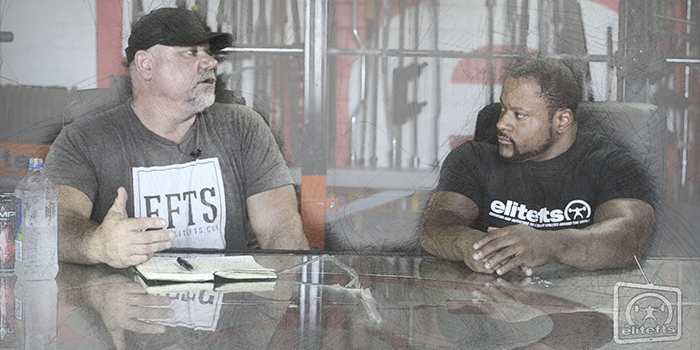
Frequency, volume, and intensity. You can adjust these three variables in any number of ways throughout periods of your training program. High frequency, high volume, low intensity? Low frequency, low volume, high intensity? Low frequency, high volume, high intensity? For almost all training programs, these variables are dependent upon one factor: percentage of your one-rep max.
Percentage-based training is at the foundation of many periodization protocols. For many reasons, however, Dave Tate and Maliek Derstine both dislike percentage-based training. Despite its popularity, they agree with one another that there are better, more efficient ways to program. Maliek sums this up with one particular statement: "I look at the measure of strength as a measurable at a specific instant in time."
WATCH: Table Talk — Sticking Points and Longevity for Raw vs Gear
What matters most in this sentence are the final words: specific instant in time. Your measured strength is going to differ between days, and will especially differ between pre-meet, post-meet, and in competition. There can be a very high level of variance in your strength levels on these different days. More specifically, there are internal and external factors that drive your numbers up or down, and those factors are always affecting you.
This means that if you want to do truly effective percentage-based training, you need to base your percentages on that specific day's one-rep max. An expected 85% could easily become 105% on a bad day, or it could work in reverse; what you think is 95% you may be able to hit for 3-5 reps on a good day, proving that your percentages are wildly skewed and what you think is 95% is more like 85%. There is a significant margin of error.
These are challenges anyone trying to follow a percentage-based training program must face. In this Table Talk video, Dave and special guest Maliek Derstine discusses alternative solutions to this problem. Maliek goes into detail about base values and how to adjust your training numbers in relation to frequency and volume to ensure that you are putting yourself in the best position to increase what he refers to as strength measurables.










2 Comments